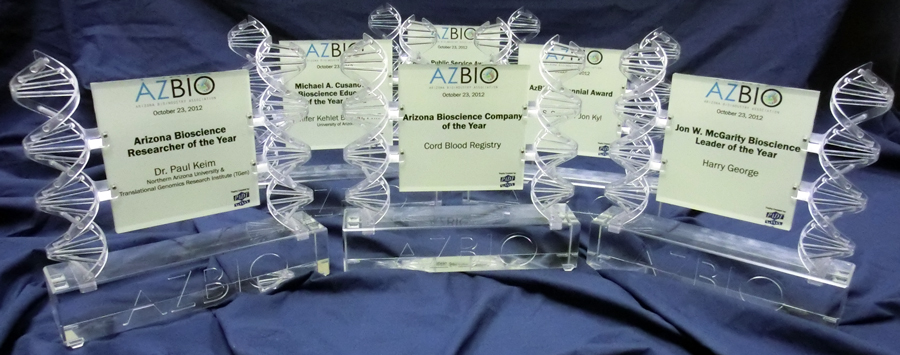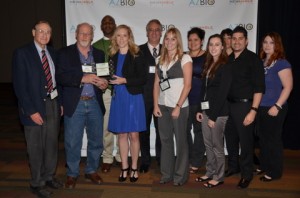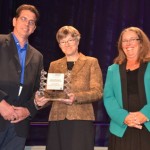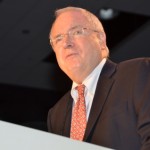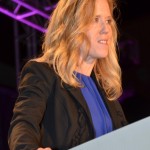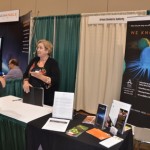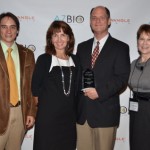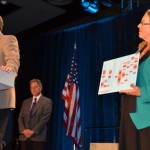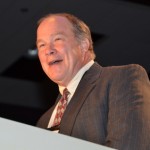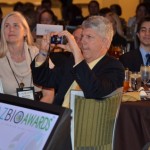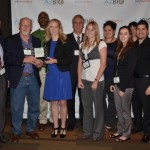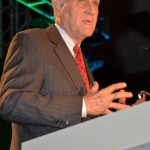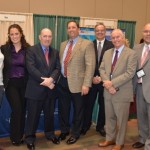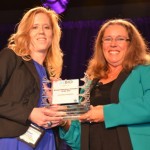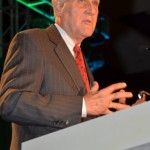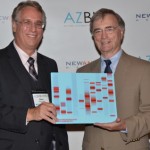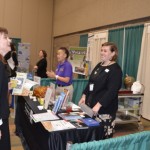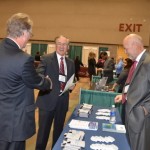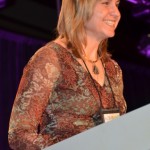Resolution supports increased finacial contributions by the state to fund resarch and medical education programsContinue reading
Category Archives: Uncategorized
One Way Out: Health Care and The Innovation Pathway
Health care, or more specifically how we will pay for health care now and in the years to come, is once again on center stage as budget talks continue to stalemate in Washington and clock ticks on towards the sequestration deadline. Perhaps its time to look for a new solution…Continue reading
IBM and The Institute of Bioengineering and Nanotechnology Develop New Antimicrobial Hydrogel to Fight Superbugs and Drug-Resistant Biofilms
Applications range from protective coating to sterilize hospital surfaces and medical equipment or as an injection to more effectively treat patients Continue reading
ASU Partners with Life Technologies on U.S. DHHS funded project
ASU partners with Life Technologies on U.S. DHHS funded project for commercial development of technologies to rapidly assess radiation doseContinue reading
Moving Up The Ranks
Over the last decade, Arizona’s bioscience sector has made amazing progress in building foundational infrastructure for research and discovery in the life science sector. This next decade of focused collaboration is our opportunity to move up the ranks and along the path from Discovery to Development to Delivery. Continue reading
UA has Hart: Inaugurating the 21st President
In her inaugural address, UA President Ann Weaver Hart charged members of the campus and community to think and act in more progressive and unconventional ways to aid in the success of the University.Continue reading
Positioning Arizona To Be A Center of Bio and Health Innovation Excellence
In October, we came together to recognize the achievements of leaders in bio-innovation from across Arizona and to celebrate the “birthdays” of initiatives and organizations that have brought us to where we are today.
Celebrations and recognition are important opportunities to recharge and reconnect. Each achievement is a mile marker along the road we have been traveling to make Arizona a tier one bioscience state. We have made significant progress over the last decade as noted in the Battelle/BIO State Industry Development Report for 2012 but we still have more road to travel and obstacles to overcome as does our industry as a whole. These challenges and opportunities are outlined in a recent article by the Brookings Institute relating to the September release of the Report from the President’s Council of Advisors on Science and Technology (PCAST) in September:
Biomedical Innovation in a Challenging Fiscal Environment
The U.S. biomedical “innovation ecosystem”—encompassing the universe of stakeholders and activities directed toward understanding disease areas and developing novel treatments for them—is in a period of stress. As noted in the September release of the report by the President’s Council of Advisors on Science and Technology (PCAST), significant scientific advances over the last 25 years have moved us toward a better understanding of the biologic underpinnings of some of the most debilitating diseases that affect the U.S. population. While novel treatment options for many of these disease areas have been developed over this time period, recent history has demonstrated that advances in basic research have not consistently translated into substantial progress in the production of novel treatments and cures. The rate at which new biomedical products are entering the market has remained relatively constant over the last few decades, while the cost and time associated with the development of new products appears to have steadily increased. Seeing the advances in novel treatments that have been made during this time may lead many to believe that increased funding for early stage research and development can relieve the stress on the innovation ecosystem. In today’s economy, however, this notion may well prove unachievable as additional public funds are unlikely to be available and private investment is constricted. These trends point toward the need for novel strategies to improve productivity in biomedical innovation and efficiently move medical products from scientific discovery to clinical practice.
Click here to read the full article on the Brookings Institute “Up Front” Blog.
The author, Gregory W. Daniel, Managing Director for Evidence Development & Innovation at the Engelberg Center for Health Care Reform at Brookings, is speaking to the challenge our industry must rise to meet, but he could be equally be speaking to us here in Arizona. The next decade is ours to shape and Arizona’s ‘collaborative gene’ could be the catalyst we need to progress to a leadership position nationally and globally as a center for bio-innovation.
Collaboration begins with connecting the dots.
Here in Arizona we have multiple centers of excellence that have developed or grown over the last decade including (but not limited to):
Global Leaders
- Ventana Medical Systems, Inc., a member of the Roche Group, is a world leader and innovator of tissue-based diagnostic solutions for patients worldwide.
- Sanofi, a global healthcare leader, discovers, develops, and distributes therapeutic solutions to improve the lives of everyone. The team at Sanofi works to prevent and treat today’s diseases , as well as those we may face tomorrow.
- Cord Blood Registry is home to the largest private cord blood stem cell collection in the world and is a leading center for stem cell research from processing to application.
- Medtronic’s Tempe Campus is home to teams that develop and manufacture innovative medical device technology and therapies to treat chronic disease worldwide.
- W.L.Gore and Associates, through its Gore Medical Products Division have provided creative therapeutic solutions to complex medical problems for 35 years.
- SynCardia Systems, Inc. is the privately-held manufacturer of the world’s first and only FDA, Health Canada and CE (Europe) approved Total Artificial Heart.
- Ulthera has pioneered new ultrasound applications and has the only non-invasive procedure FDA-approved to lift skin on the neck, chin and brow
Health Information Technology
- GlobalMed, a privately held telemedicine company headquartered in Scottsdale, Arizona, is the leader of telemedicine companies in telehealth hardware and software R&D, design, engineering, manufacture and support. #95 on the Inc. 500 list and #7 in healthcare, their team of telemedicine software developers and engineers work closely with scientific and medical professionals—from concept to application—to understand and translate unmet needs into next-generation integrated telemedicine tools unsurpassed in quality, affordability and flexibility.
- The Arizona Telemedicine Program is a large, multidisciplinary, university-based program that provides telemedicine services, distance learning, informatics training, and telemedicine technology assessment capabilities to communities throughout Arizona, the sixth largest state in the United States, in square miles. The program has succeeded in creating partnerships among a wide variety of not-for-profit and profit healthcare organizations, and has created new interagency relationships within the state government.
- The CSS Institute, organized as a 501 (c) 3 non-profit medical research entity, was established in 2011 with core funding from Dr. Patrick Soon-Shiong and his wife Michele B. Chan, who have pledged through their family foundation $1 billion for healthcare and health information projects. The CSS Institute currently operates in both California and Arizona and is exploring relationships with other states. In April 2011 it announced the construction of data centers in Phoenix and Scottsdale dedicated to health information storage, and also the construction of a dedicated supercomputer in Phoenix. All these have since become operational and are now being connected with National LambdaRail. The CSS Institute’s funding for NLR comes through the Institute’s National Coalition for Health Integration, itself a 501 (c) 3 established in 2009 specifically to advance bio-informatics, the health grid and the creation of a national health information network.
Research Centers of Excellence
- The Critical Path Institute is setting the standards that make cures. C-Path improves efficiency of the development of drugs, diagnostics, and medical devices by creating new data standards, measurement standards, and methods standards.
- The Translational Genomics Research Institute (TGen) and the International Genomics Institute (IGC) are leading in ground breaking genomics research
- TGen and the University of Arizona Cancer Center (UACC) partner with NFCR Center for Targeted Cancer Therapies (NCTCT), created in 2002, which is dedicated to discovering new therapies to treat pancreatic cancer, the nation’s fourth leading cause of cancer death.
- The Keim Lab at Northern Arizona University and TGen North are national centers of excellence in pathogen genomics
- The Biodesign Institute at Arizona State University is working to make a difference are: biomedicine & health outcomes, sustainability and security that are “use-inspired,” as well as “bio-inspired” solutions.
- BIO5 at the University of Arizona is home to teams collaborating across five disciplines: Agriculture. Engineering. Medicine. Pharmacy. Teams work together to forge solutions to the complex biology-based challenges affecting humanity today.
- The Arizona Alzheimer’s Consortium (AAC)is the nation’s leading model of statewide collaboration in Alzheimer’s disease research. Established in 1998, the Consortium capitalizes on its participating institutions’ complementary strengths in brain imaging computer science, genomics, the basic and cognitive neurosciences and clinical and neuropathology research to promote the scientific understanding and early detection of Alzheimer’s disease and find effective disease-stopping and prevention therapies. The Arizona Alzheimer’s Consortium is a 501(c)(3) organization that includes the state-supported Arizona Alzheimer’s Research Center (AARC), the National Institute on Aging (NIA)-funded Arizona Disease Core Center (Arizona ADCC), and independently funded research programs. Its seven member institutions include: Arizona State University, the Barrow Neurological Institute, the Mayo Clinic Arizona, the Banner Sun Health Research Institute, the Translational Genomics Research Institute (TGen), the University of Arizona, and the recently established Banner Alzheimer’s Institute. Its three affiliated institutions include Banner Good Samaritan Medical Center, the Southern Arizona Veterans Administration Health Care System and the University Physician’s Hospital at Kino.
- The UA’s College of Medicine Phoenix is setting new standards in medical education as they pioneer new programs as the first medical school to be built from the ground up anywhere in the US in the last three decades. A collabroative effort between the UA, the City of Phoenix, and
- Science Foundation Arizona funds STEM Education and research grants in areas of strategic importance, helping to ensure Arizona’s competitive future.
These are only a few examples of the many assets our bioscience community has produced. Each of them stand out as great examples of collaborative innovation and connect us to the national and global bioscience efforts. They also serve as magnets, attracting top talent that is drawn to opportunities to work with others towards a common goal.
When we combine this with emerging health innovations from companies including Calimmune (HIV/AIDS), Regenesis (Regenerative Medicine), Global Cancer Diagnostics (Lung Cancer). VisionGate (Lung Cancer), and many more, we begin to see patterns of dots that can be connected in improve both health and the economy of the state. (To view hundreds of companies that dot Arizona’s Bioscience Landscape, click here.)
Connecting the dots and activating our ‘collaborative gene’ to create new solutions that will allow us to do more in ways that are both efficient and effective will create new opportunities in 2013 and beyond.
______________________________________
Tip #4 for Moving Forward Faster in 2013
Work with AZBio to help you “connect the dots.”
As Arizona’s statewide bioindustry association, AZBio is uniquely positioned to connect individuals and organizations inside Arizona and across the country. AZBio members come from all sectors of Arizona’s health care and life science industry and lead in the discovery, development, and delivery of new technologies that will deliver solutions to some of the world’s greatest challenges relative to Health, Energy, and Agriculture.
In addition to making connections across our industry, AZBio also works with Arizona’s economic development and elected leaders to help make Arizona competititive and attractive to current and future bioscience enterprises by fostering an environment where lifescience companies can launch and grow.
With Five Weeks To Go – Time to Connect and Compare Notes
With 5 weeks left in 2012 and a new year right around the corner, each week is an opportunity to focus in on one area that creates new opportunities in 2013. Between now an the end of the year, your IN THE LOOP will feature a new tip each week. So as we countdown to 2013…Continue reading
Stars Shine at the 2012 AZBio Awards
On Tuesday October 23, 2012 the stars were shining inside the Phoenix Convention Center at the AZBio Awards as our community came together to celebrate the companies and individuals who are moving us forward faster.
At the end of the evening, Cord Blood Registry was named 2012 Arizona Bioscience Company of the Year in celebration of a 20 year history of innovation and leadership in the field of cord blood stem cells. CBR helps more families save and use their cord blood stem cells for treatment than any other family bank in the world. From superior quality and service to their unique access to groundbreaking research, CBR is the world leader and heir facility in Tucson, Arizona is home to the world’s largest community of privately stored cord blood stem cells. Our community will have the opportunity to get together with the CBR team and tour the Tucson facilty this coming January as we kick of AZBio’s Tucsoon events in Southern Arizona.
Local and national leaders joined the celebration and we were truly honored to have with us Governor Jane D. Hull, who during her years of service as Arizona Governor, led us in creating a focused environment for leadership in the biosciences. Senator Jon Kyl, Congressman Trent Franks, Congressman Paul Gosar, DDS, Arizona Senator Al Melvin, and Arizona Representative Vic Williams joined AZBio Chairman Glen Galster, Pfizer’s Shelby Fletcher and Fritz Bittenbender, Vice President of the Biotechnology Industry Association (BIO) to sit with 2012 Pioneer Award winner Raymond L. Woosley, MD,PhD. Next door, University of Arizona President Ann Weaver Hart enjoyed the evening with her University of Arizona leadership team, Arizona Senate President Steve Pierce, and Arizona Speaker of the the House, Andy Tobin.
AZBio Board Member Mike Mobley of M. J. Mobley Consulting, LLC and his team of independent judges selected an amazing group of honorees for us this year. Each award category had its own independent panel made up of leaders from across Arizona and the thought and consideration that was put into the selection of each award winner from the body of nominations was a significant contribution of both tiime and leadership. Thank you judges!
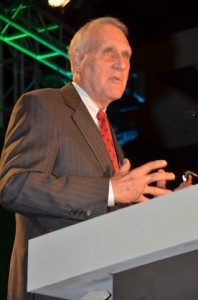
- U.S. Senator Jon Kyl was honored with the AZBio Centennial Award in recognition of his decades of leadership in Washington, D.C. and dedicated service to our industry and to the people of Arizona.
The 2012 AZBio Award winners are:
Centennial Award:
U.S. Senator Jon Kyl.
AZBio Pioneer Awards:
Dr. David S. Alberts
Dr. Raymond L. Woosley
Michael A. Cusnovich
Bioscience Educator of the Year
Jennifer Kehlet Barton, PhD
2012 Public Service Award
Rick Myers, Chair of the Arizona Board of Regents
Bioscience Researcher of the Year
Paul Keim. PhD
Jon W. McGarity
Bioscience Leader of the Year
Harry A. George
Fast Lane Award Winners:
Critical Path Institute
Global Cancer Dx
Ulthera
Bioscience Company of the Year
Cord Blood Registry
Finalists: Brain State Technologies and Flagship Biosciences.
The audience enjoyed gettiing to know our honorees through video vignettes throughout the evening. You can replay them all by visiting the AZBio Expo Online. Simply register and login for access and then view the videos in the “2012 AZbio Awards” innovation folder. We’ll be adding the videos from the evening’s events this wee also, so come back and visit often for all of the latest AZBio Awards videos and highlights from across our biosciencee community. You will also find hundreds of photos from the event at the AZBio Facebook Page.
Here are some memories from the 2012 AZBio Awards. Click on the image to see the full size photo.
AZBio To Honor US Senator Jon Kyl at AZBio Awards
U.S. Senator Jon Kyl will be honored with the AZBIo Centennial Award on October 23, 2012 at the Phoenix Convention Center as thanks for his leadership and service to the people of Arizona and innovators across the country. Continue reading

